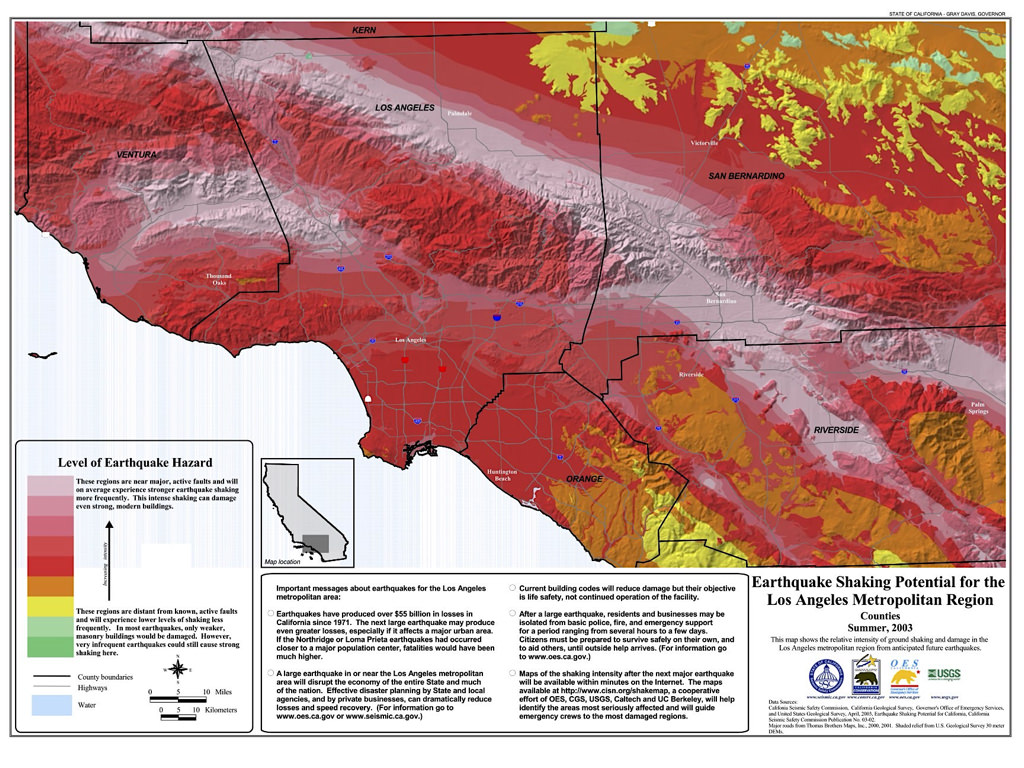We kindly ask for your patience as we continue work on rebuilding this website. Your understanding is appreciated; thank you!

earthquakes
NOT IF, BUT WHEN
The Great Southern California ShakeOut scenario is based on a potential magnitude 7.8 earthquake on the southern San Andreas Fault near the Salton Sea. It’s not a matter of if an earthquake of this size will happen—but when. Chances are it will happen in your lifetime.
The U.S. Geological Survey studied the likely consequences of this potential earthquake, and produced the ShakeOut Earthquake Scenario. A magnitude 7.8 earthquake will last for almost two minutes, with the strongest shaking near the fault in the Coachella Valley, Inland Empire and Antelope Valley (Jones, et al., 2008).
An earthquake of this size could cause some 2,000 deaths, 50,000 injuries, $200 billion in damage and other losses, and severe, long-lasting disruption (Jones, et al., 2008). Click on the video below to watch how this scenario could unfold.
Fig. 1. Growth of a magnitude 7.8 earthquake on southernmost 200 mi of San Andreas Fault (USGS, 2008)

Fig. 2. Scenario of an earthquake 92 seconds after start in the Salton Sea, CA (Leggatt, 2015)
References
Jones, L. M., Bernknopf, R., Cox, D., Goltz, J., Hudnut, K., Mileti, D., Perry, S., Ponti, D., Porter, K., Reichle, M., Hope, S., Shoaf, K., Treiman, J., and Wein, A. (2008). The ShakeOut Scenario: U.S. Geological Survey Open-File Report 2008-1150 and California Geological Survey Preliminary Report 25. https://pubs.usgs.gov/of/2008/1150/of2008-1150.pdf
Leggatt, J. (2015). (Image based on ShakeOut scenario at 92 seconds from start.) [Image rendered by author.]
Seismic Safety Commission. (2003). Earthquake Shaking Potential for the Los Angeles Metropolitan Region. [PDF]. https://ssc.ca.gov/wp-content/uploads/sites/9/2020/08/la_county_print.pdf
USGS. (2008). Southern California ShakeOut. (Computer simulation of ground shaking from this scenario in a magnitude 7.8 earthquake, constructed in collaboration between the USGS and the Southern California Earthquake Center). https://escweb.wr.usgs.gov/content/learn/topics/shakingsimulations/shakeout/ShakeOut_mapview_hd.mp4
